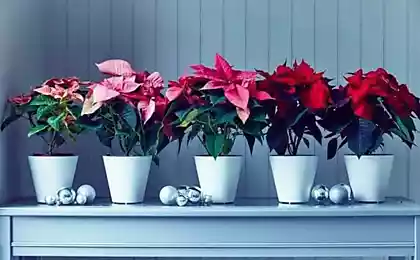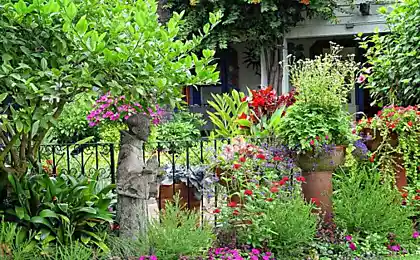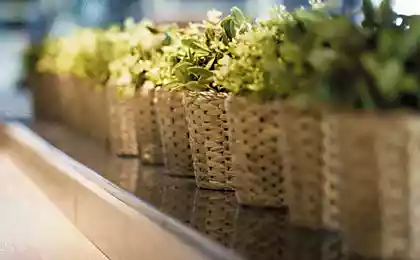180
Houseplants that brazenly and lushly bloom in winter frosts
For three long winter months, the world around us turns gray and white. And here help plants that bloom in the cold season. These indoor flowers in winter will dilute the gloomy everyday life with bright colors and bring to them the atmosphere of a real holiday.
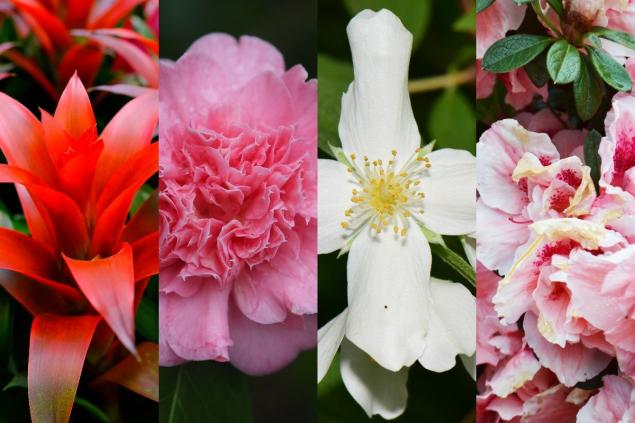
The butterfly orchid, as the phalaenopsis is also called, is famous for its long (from 2 to 6 months or more) flowering.

This usually happens two or three times a year. And to bring closer the happy moment of flower blooming orchids will help you our advice.
The flower of this orchid looks like a bird flying at you pic.twitter.com/rIu3lhacJ
— Volodymyr Khomenko (@DominoBank) October 9, 2014
The flower of the phalaenopsis resembles a bird that has opened its wings. An amazing creation of nature!
The homeland of Camellia is the Far East. And in Europe it appeared in the XVIII century due to a funny coincidence. It is claimed that dexterous Chinese traders shoved the British decorative camellia, passing off a tea bush for its relative from the Tea family.

The main reason for the popularity of the Japanese rose is its ability to bloom in winter. In Spain, for example, where winters are cool and humid, camellia bushes dress up in a bright floral dress in open-air gardens and parks. And we need to create certain conditions in our apartment.
View this post on Instagram
A post shared by MelekHanim (@melek.flowers)
During the flowering of camellia, it is advisable to take it to a cool (12-15 degrees) glazed balcony. Do not allow dry air and drying of the soil in the pot.
At home, two varieties of jasmine are grown: Sambak and Holflower. Both of them do not like drafts and temperatures below 15 degrees.
View this post on Instagram
A post shared by Varietal Pelargonium Collection (@zvety_astrahan)
To prolong flowering, you need to tie the flexible stems of the plant and regularly water it with soft water.
Indian azalea Rhododendron Sims, or azalea Sims, or Indian azalea, is a small shrub, releasing in early December bright inflorescences of purple, purple, pink and white shades.

For growing at home, beginner flower growers should look at the varieties of small-flowered azaleas. These are Kocho no mai, Cattleya, Addy Wery, Azuma kagame, Adonis and Himomayo.
View this post on Instagram
A post shared by Julia (@bonsai_slutsk)
In the cool season, indica needs conditions similar to those in which it blooms in nature. This temperature is about 17 degrees and humidity is at least 70%. In Europe, azalea is popular as a decoration of the Christmas table. It is believed that it brings happiness to the home.
Poinsettia, or Christmas star, is known for its bright bracts. The flowers of the plant are small and nondescript, but the leaves framing them compensate for this a hundredfold.
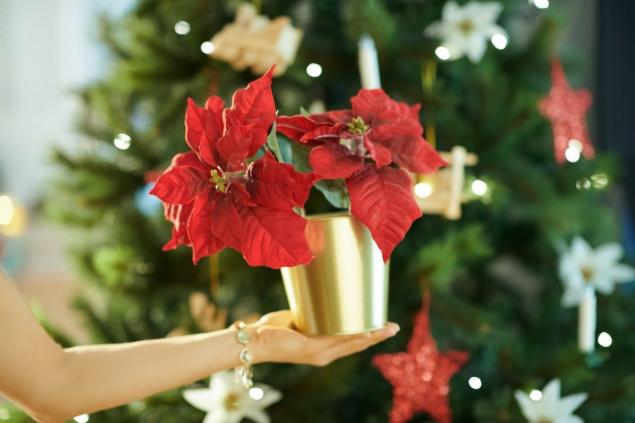
The flower is quite unpretentious. But for flowering it needs moderate temperature, bright lighting and humid air. Poinsettia usually blooms in December and blooms for about two months.
Cyclamen Persian To cyclamen pleased with flowering in winter, you will need a cool windowsill and scattered sunlight. Watering the plant is necessary so as not to soak the leaves and root.
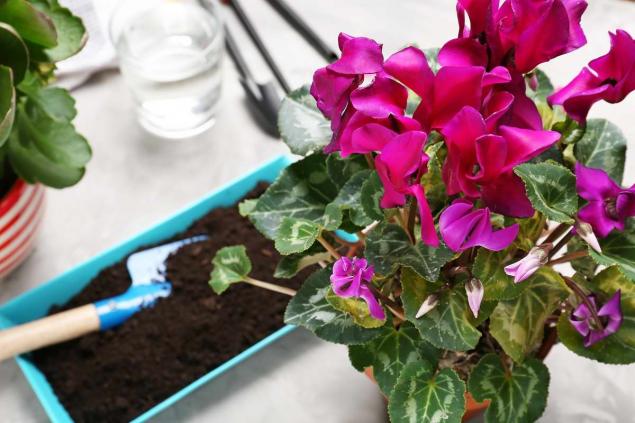
The homeland of Kalanchoe Blossfeld is the moist forests of Madagascar. Flowers loved it for its unpretentiousness and the widest range of inflorescences: from soft green to pink, yellow, red and two-color combinations.

The flowering of the plant lasts from 6 weeks to 2.5 months (Kalanchoe Kalandiva). And with good care, bright and lush inflorescences can be admired even longer.
View this post on Instagram
A post shared by Lilia Zakharina (@lililiya0210)
In nature, Kalanchoe blossoms when daylight decreases. Therefore, the duration of lighting before flowering should be limited. Otherwise, all the energy of the plant will go to the formation of new shoots and leaves.
In nature, Saintpaulia, which we used to call violet, grows in the mountainous regions of East Africa. And has nothing to do with those forest violets, which are considered a symbol of innocence and cover the ground with a fragrant carpet in early May.

Saint-Polis love moist air, like on the banks of mountain rivers that flow in their homeland. But do not tolerate when the water falls directly into the middle of the socket. This can cause the leaves to rot. And about how to care for capricious beauties, we wrote earlier.
The onion plant hippeastrum has a pronounced resting period. In August-September, it stops growing and sheds its leaves. In December, a new arrow is formed, from which large inflorescences appear.

Hippeastrum blooms only about ten days. But its flowering dates can be regulated. This is very convenient, because the flowering plant looks no worse than the most expensive bouquet.
Guzmania, or guzmania (Latin Guzmania), is an evergreen plant native to the tropical forests of South America.

The main decoration of Guzmania, as in the case of Poinsettia, are bright bracts. On sale you can find plants with burgundy, orange, scarlet and yellow bracts.
View this post on Instagram
A post shared by Story Flowers (@storyflowers.kz)
Guzmania has the ability to extract useful substances from dust, thus reducing the amount of dust particles and purifying the air in the room. As you can see, many indoor flowers bloom in winter, no worse than in summer. Approach their choice with special care, and in your home there will always be beauty, harmony and well-being.
Photo in article and preview.

The butterfly orchid, as the phalaenopsis is also called, is famous for its long (from 2 to 6 months or more) flowering.

This usually happens two or three times a year. And to bring closer the happy moment of flower blooming orchids will help you our advice.
The flower of this orchid looks like a bird flying at you pic.twitter.com/rIu3lhacJ
— Volodymyr Khomenko (@DominoBank) October 9, 2014
The flower of the phalaenopsis resembles a bird that has opened its wings. An amazing creation of nature!
The homeland of Camellia is the Far East. And in Europe it appeared in the XVIII century due to a funny coincidence. It is claimed that dexterous Chinese traders shoved the British decorative camellia, passing off a tea bush for its relative from the Tea family.

The main reason for the popularity of the Japanese rose is its ability to bloom in winter. In Spain, for example, where winters are cool and humid, camellia bushes dress up in a bright floral dress in open-air gardens and parks. And we need to create certain conditions in our apartment.
View this post on Instagram
A post shared by MelekHanim (@melek.flowers)
During the flowering of camellia, it is advisable to take it to a cool (12-15 degrees) glazed balcony. Do not allow dry air and drying of the soil in the pot.
At home, two varieties of jasmine are grown: Sambak and Holflower. Both of them do not like drafts and temperatures below 15 degrees.
View this post on Instagram
A post shared by Varietal Pelargonium Collection (@zvety_astrahan)
To prolong flowering, you need to tie the flexible stems of the plant and regularly water it with soft water.
Indian azalea Rhododendron Sims, or azalea Sims, or Indian azalea, is a small shrub, releasing in early December bright inflorescences of purple, purple, pink and white shades.

For growing at home, beginner flower growers should look at the varieties of small-flowered azaleas. These are Kocho no mai, Cattleya, Addy Wery, Azuma kagame, Adonis and Himomayo.
View this post on Instagram
A post shared by Julia (@bonsai_slutsk)
In the cool season, indica needs conditions similar to those in which it blooms in nature. This temperature is about 17 degrees and humidity is at least 70%. In Europe, azalea is popular as a decoration of the Christmas table. It is believed that it brings happiness to the home.
Poinsettia, or Christmas star, is known for its bright bracts. The flowers of the plant are small and nondescript, but the leaves framing them compensate for this a hundredfold.

The flower is quite unpretentious. But for flowering it needs moderate temperature, bright lighting and humid air. Poinsettia usually blooms in December and blooms for about two months.
Cyclamen Persian To cyclamen pleased with flowering in winter, you will need a cool windowsill and scattered sunlight. Watering the plant is necessary so as not to soak the leaves and root.

The homeland of Kalanchoe Blossfeld is the moist forests of Madagascar. Flowers loved it for its unpretentiousness and the widest range of inflorescences: from soft green to pink, yellow, red and two-color combinations.

The flowering of the plant lasts from 6 weeks to 2.5 months (Kalanchoe Kalandiva). And with good care, bright and lush inflorescences can be admired even longer.
View this post on Instagram
A post shared by Lilia Zakharina (@lililiya0210)
In nature, Kalanchoe blossoms when daylight decreases. Therefore, the duration of lighting before flowering should be limited. Otherwise, all the energy of the plant will go to the formation of new shoots and leaves.
In nature, Saintpaulia, which we used to call violet, grows in the mountainous regions of East Africa. And has nothing to do with those forest violets, which are considered a symbol of innocence and cover the ground with a fragrant carpet in early May.

Saint-Polis love moist air, like on the banks of mountain rivers that flow in their homeland. But do not tolerate when the water falls directly into the middle of the socket. This can cause the leaves to rot. And about how to care for capricious beauties, we wrote earlier.
The onion plant hippeastrum has a pronounced resting period. In August-September, it stops growing and sheds its leaves. In December, a new arrow is formed, from which large inflorescences appear.

Hippeastrum blooms only about ten days. But its flowering dates can be regulated. This is very convenient, because the flowering plant looks no worse than the most expensive bouquet.
Guzmania, or guzmania (Latin Guzmania), is an evergreen plant native to the tropical forests of South America.

The main decoration of Guzmania, as in the case of Poinsettia, are bright bracts. On sale you can find plants with burgundy, orange, scarlet and yellow bracts.
View this post on Instagram
A post shared by Story Flowers (@storyflowers.kz)
Guzmania has the ability to extract useful substances from dust, thus reducing the amount of dust particles and purifying the air in the room. As you can see, many indoor flowers bloom in winter, no worse than in summer. Approach their choice with special care, and in your home there will always be beauty, harmony and well-being.
Photo in article and preview.
What is known about the new strain of COVID-19 from Brazil
Why Sagittarius will be in great demand from mid-January and families are burning with a new force of love



